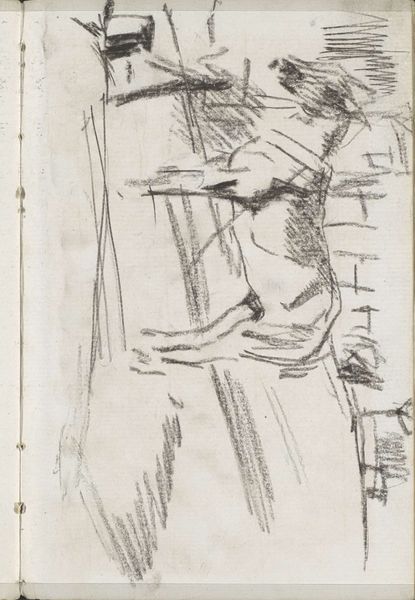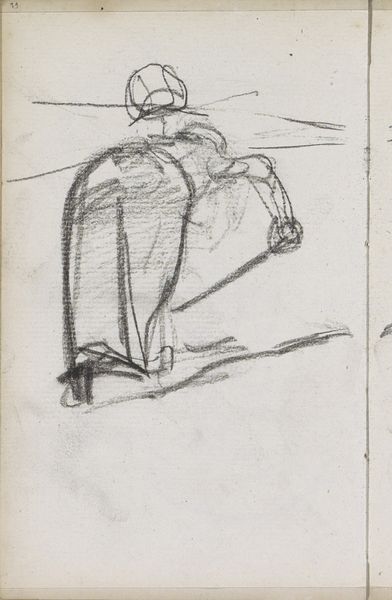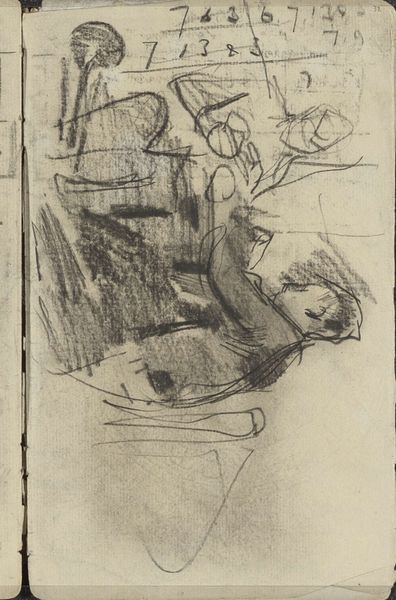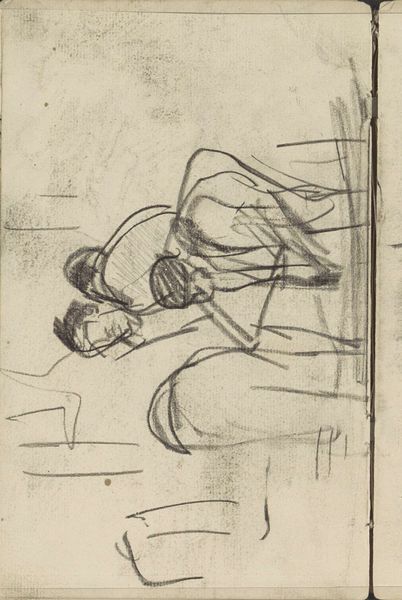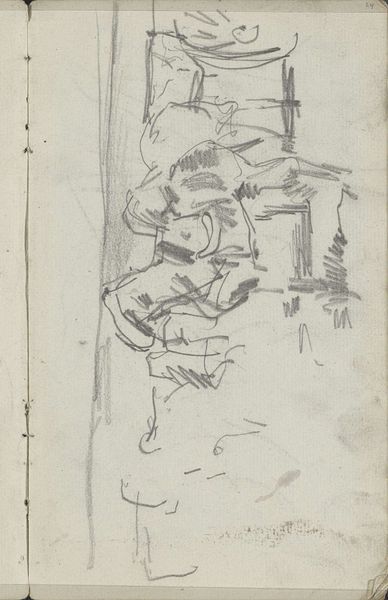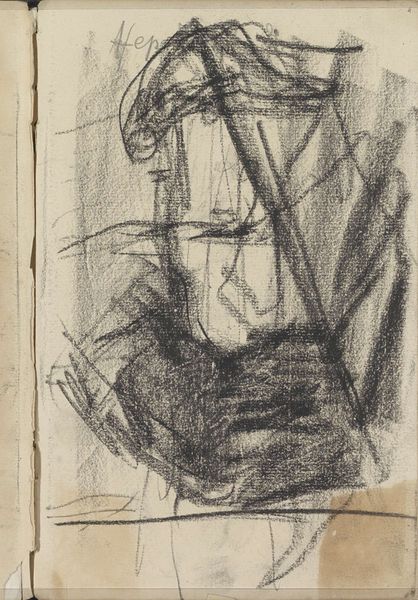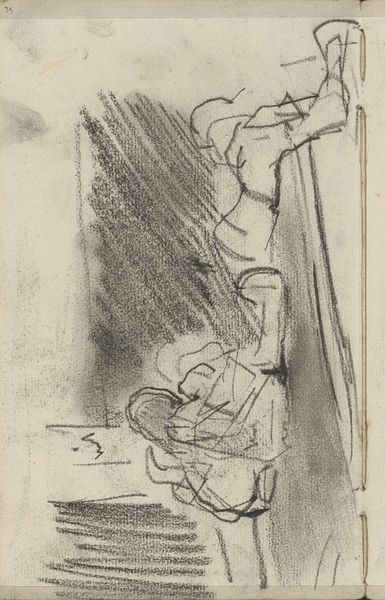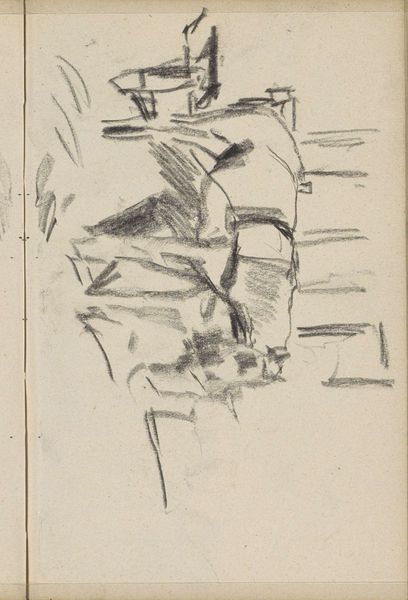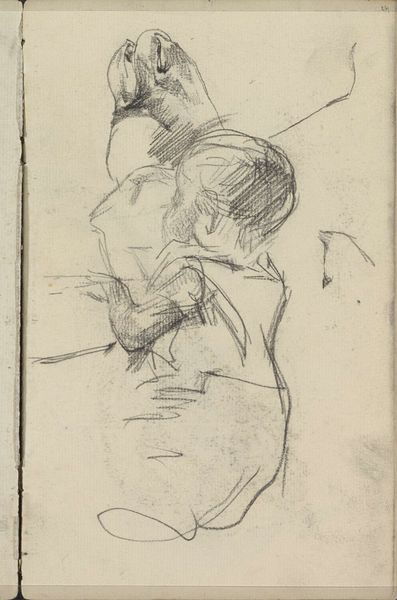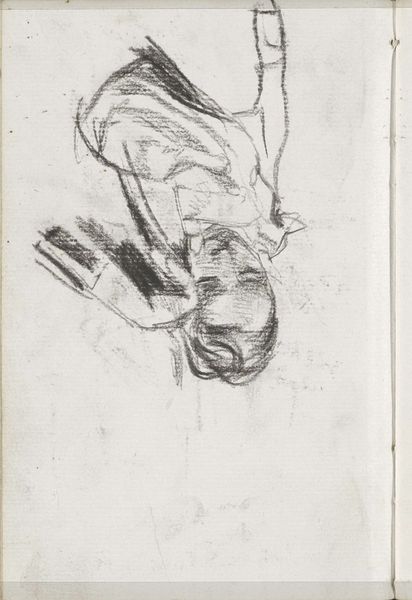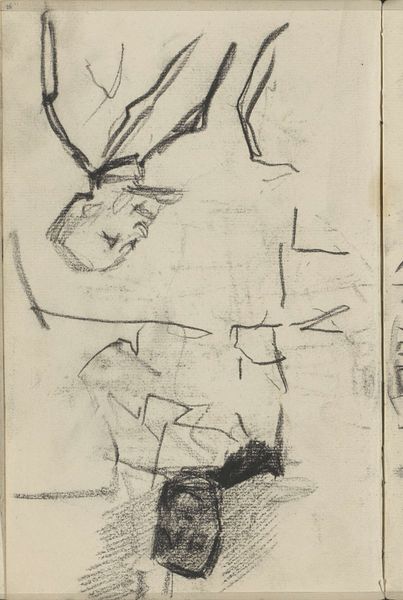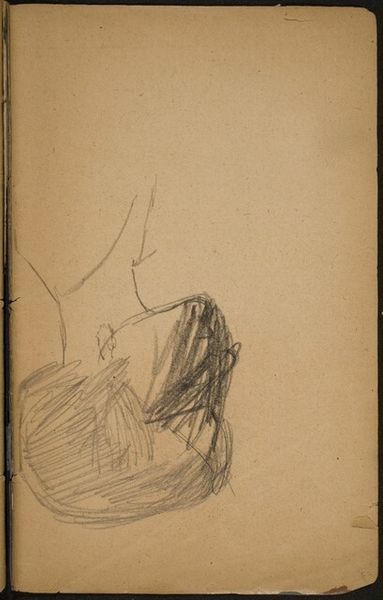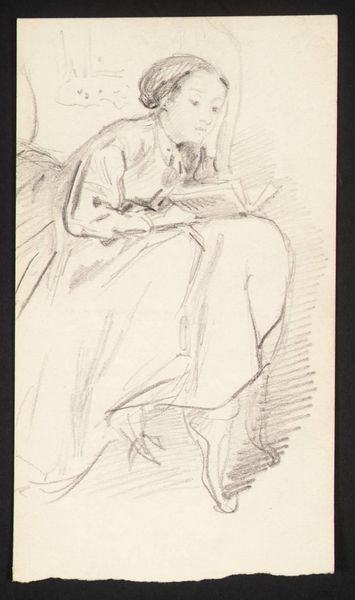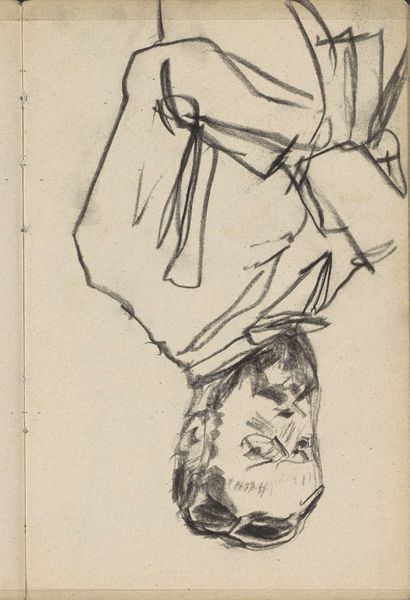
Figuurstudie en een hoofd van een oude vrouw met muts Possibly 1883 - 1885
0:00
0:00
georgehendrikbreitner
Rijksmuseum
drawing, graphite
#
portrait
#
drawing
#
figuration
#
graphite
#
realism
Copyright: Rijks Museum: Open Domain
Editor: Here we have George Hendrik Breitner’s graphite drawing, “Figuurstudie en een hoofd van een oude vrouw met muts,” possibly from the mid-1880s. I find it striking how simple the lines are, yet they convey such a sense of weariness and quiet observation. What jumps out at you? Curator: It’s interesting you say that. What I see first is Breitner’s social context reflected here. Remember, he was drawn to the everyday life of Amsterdam, particularly those on the margins. This isn't about glorifying poverty, but documenting it, making it visible in a time when such realities were often glossed over in art. Look at the visible quick and decisive lines, typical for drawings used for journalistic publications from this time. Editor: So, you’re saying this wasn’t necessarily intended as a finished piece, but more as… a sketch for a larger narrative about Amsterdam? Curator: Precisely. It is likely to have been an early sketch in preparation for the production of a printed image. Breitner engaged with Realism, making a visual argument about who deserved to be represented. Were the poor part of Dutch society, and shouldn’t that be documented? It makes us think about how art can function as a social commentary. Editor: I hadn't considered that this simple drawing might carry so much weight in terms of social commentary. Seeing it as a preparatory piece also gives me a completely different perspective. Curator: Absolutely. Consider the Rijksmuseum's role in exhibiting this drawing today. By showcasing it, are we amplifying Breitner's original intention, or giving it a new meaning? Editor: It really changes how I view not just the artwork itself, but also how museums present works that document sensitive social issues. Thanks, this gives me much food for thought.
Comments
No comments
Be the first to comment and join the conversation on the ultimate creative platform.
